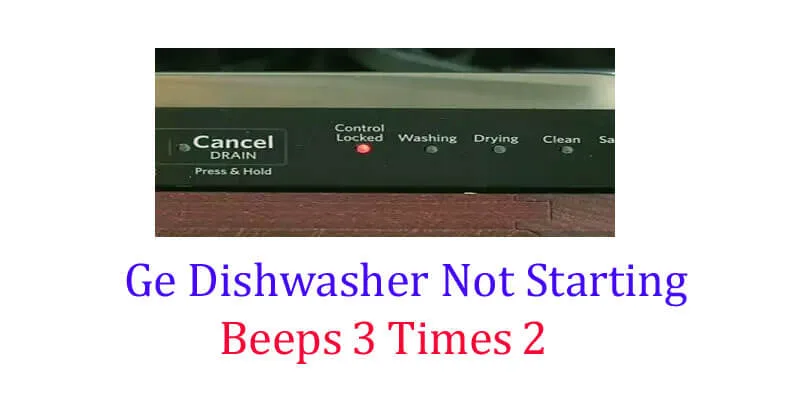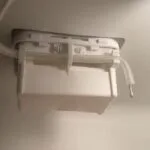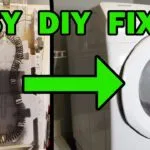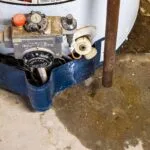The three beeps from a Ge dishwasher indicate a malfunction. The problem might be with the latch or control panel.
A dishwasher is an essential appliance for maintaining a clean and organized kitchen. If your Ge dishwasher is beeping three times and not starting, it can be frustrating. This problem might occur due to a faulty latch or control panel.
The dishwasher latch ensures that the door is properly closed and locked during the washing cycle, while the control panel manages the dishwasher’s functioning. Troubleshooting the issue can involve some simple checks, including ensuring the dishwasher is powered, making sure the door is correctly latched, and verifying that the control panel is functioning correctly. If these solutions don’t fix the problem, then professional assistance might be needed to resolve the issue.

What Does 3 Beeps On A Ge Dishwasher Mean?
Ge dishwashers are among the top household brands that come with excellent features and functionality. It is disappointing when you load your dishwasher, and it fails to start, but instead, you hear three beeps. However, these beeps could be a warning of possible faults.
In the following sections, we will discover the meaning of three beeps on a Ge dishwasher and how the dishwasher uses the beeps to indicate errors.
Explaining The Meaning Of 3 Beeps On Ge Dishwasher For Customers
When your GE dishwasher beeps three times, it means that the control panel has detected a malfunction with the dishwasher. The beeps could be a warning of various malfunctions, among them, the following:
- Overfilling of the dishwasher.
- The control panel failed to communicate with the electrical components of the dishwasher.
- The door latch or strike is not adjusted correctly.
- Malfunctioning of the temperature sensor, water fill valve, or motor.
How Does The Dishwasher Use Beeps To Indicate Errors?
To indicate faults, a ge dishwasher uses beeps and specific LED lights. Below are some of the beep codes and their meanings:
- One beep: This could be a malfunction with the wash motor or an issue with the wash temperature.
- Two beeps: indicate there could be an issue with the door latch, indicating the door is not correctly latched.
- Three beeps: This could be a warning of various malfunctions, among them, overfilling, failure of the control panel to communicate with the dishwasher components, a faulty motor or temperature sensor, or a water fill valve.
- Four beeps: This could be a signal of a malfunction in the rinse aid dispenser or a faulty water heater.
- Five beeps: This could be a warning of an issue with the wash pump, motor, or clean water temperature.
- Six beeps: This could be a signal of a malfunction in the dishwasher’s detergent dispenser.
Understanding the meaning of three beeps on a Ge dishwasher and how the dishwasher uses beeps to indicate errors is crucial for effective troubleshooting. More importantly, if you encounter three beeps, it’s advisable to check the manual or contact a professional for further assistance.
Common Reasons For The 3 Beeps And Not Starting Issue
Ge dishwasher not starting beeps 3 times: common reasons for the 3 beeps and not starting issue
Dishwasher Door Latch And Switch Issues
- The primary cause of the GE dishwasher not starting after three beeps is likely to be a faulty door latch or switch.
- The door latch in the dishwasher ensures that the door closes securely before the appliance can begin running.
- If the door latch is not functioning, the dishwasher will not start, and it will beep three times.
- The door switch should also be checked, as the dishwasher may fail to start, even if the latch is working if the door switch is defective.
Checking The Condition Of The Latch And Switch
- Check the door latch and switch for any visible signs of wear or damage.
- Inspect both components’ wiring to ensure it is not disconnected or frayed.
- If you suspect that either of these components is faulty, it’s essential to replace them right away to avoid further issues.
Replacing The Latch And Switch If Faulty
- If you’re unsure whether the latch or switch is working correctly, you can use a multimeter to test the components’ continuity.
- If your tests indicate that either component is faulty, replacing them is necessary.
- Look for a compatible replacement latch or switch that matches the manufacturer’s specifications and type of dishwasher.
Defective Control Board
- Another possible culprit for the GE dishwasher not starting 3 times is a defective control board.
- The control board plays a critical role in regulating the dishwasher’s functions and ensuring all components work correctly.
- If the control board is malfunctioning, the dishwasher may not start, or it may beep three times intermittently.
Symptoms Of A Defective Control Board
- The dishwasher runs longer than expected or may not start.
- The control board may produce a beeping sound or display an error code on the dishwasher’s control panel.
- The dishwasher’s buttons may not function correctly, or the LED display may not show any information.
How To Troubleshoot A Defective Control Board
- Unplug the dishwasher from its power source and unscrew the control board from the appliance.
- Inspect the board for any visible signs of damage or wear, such as loose connections or burned components.
- If you identify any issues, consider replacing the entire control board or replacing any faulty components.
Faulty Motor Or Motor Capacitor
- A final point to consider if your dishwasher beeps three times and won’t start is a faulty motor or motor capacitor.
- These components are critical to powering the dishwasher’s spray arms, which clean the dishes.
- Issues with the motor or the motor capacitor may cause the dishwasher to beep three times and not start at all.
Identifying Motor Or Motor Capacitor Issues
- Check the spray arms to ensure they are spinning freely, as a tripped motor or motor capacitor can cause the spray arms to stop functioning.
- Inspect the motor and motor capacitor for any visible signs of damage or wear, such as corrosion or discoloration.
- Use a multimeter to test whether the motor or motor capacitor is working correctly.
How To Diagnose And Replace Them
- Identify the specific motor or motor capacitor that requires replacement.
- Locate the correct replacement part as per the manufacturer’s specifications and choose an authorized seller to ensure the component’s quality.
- After purchasing the correct part, unscrew the housing of the motor and motor capacitor, and then carefully replace the damaged component.
Steps To Troubleshoot The 3 Beeps and Won’t Start Issue
Troubleshooting A Ge Dishwasher That Beeps 3 Times And Won’t Start
If you’ve discovered your GE dishwasher beeping three times and refusing to start, there are a few things you can do to troubleshoot the issue. Here are the steps you should take:
Checking For Power Supply
Before you can troubleshoot your dishwasher, you’ll need to make sure it’s getting power. Here’s how:
- Make sure the dishwasher is plugged in.
- Check the circuit breaker to see if it’s been tripped.
- If the dishwasher is plugged in and the circuit breaker is on, try plugging another device into the same outlet to make sure it’s working.
Testing the power supply to the dishwasher
If you’re not getting power to the dishwasher, you’ll need to test the power supply. Here’s what to do:
- Unplug the dishwasher.
- Remove the cover from the junction box where the power supply enters the dishwasher.
- Use a multimeter to check for voltage between the black and white wires (should be 120 volts).
- Check for continuity between the black and green wires (should be zero).
Replacing Faulty Power Supply Components
If you find that the power supply components are faulty, you’ll need to replace them. Here are the steps:
- Turn off the power to the dishwasher.
- Disconnect the old wires and remove the old components.
- Install the new components and connect the wires.
- Turn the power back on and test the dishwasher.
Inspecting The Dishwasher Door
If the dishwasher is receiving power but still won’t start, the next step is to check the door. Here’s what to do:
- Check for any visible damage to the door.
- Make sure the latch is engaging properly.
- Check for any obstructions around the door that might be preventing it from closing.
Checking The Door Latch For Any Obstructions
If your dishwasher door isn’t latching properly, there may be something obstructing it. Here’s what to do:
- Inspect the latch for any visible obstructions.
- Check the area around the latch for any debris or other objects.
- If you find any obstructions, remove them and try again.
Making Adjustments To Ensure The Door Seals Properly
If you’ve checked the latch and found no obstructions, you may need to adjust the door to ensure it seals properly. Here’s how:
- Loosen the screws on the hinges.
- Adjust the door until it aligns properly with the opening.
- Tighten the screws.
- Test the door to make sure it seals properly.
Resetting The Dishwasher Control Panel
If your dishwasher still won’t start, it may be time to reset the control panel. Here’s how:
Understanding When To Reset The Control Panel
Before you reset the control panel, it’s important to know when to do so. You should reset the control panel if:
- You’ve checked the power supply and the door latch, and neither seems to be the issue.
- The dishwasher has been running for a long time but doesn’t seem to be progressing through the cycle.
- The control panel seems to be stuck and unresponsive.
How To Complete The Reset Process
To reset the control panel, follow these steps:
- Locate the control panel on the front of the dishwasher.
- Press and hold the start or reset button for 5 seconds.
- Wait for the dishwasher to reset.
- Test the dishwasher to see if it’s now working properly.
Testing Dishwasher Components
If your dishwasher still isn’t working, you’ll need to test its components. Here’s what to do:
How To Test The Motor, Timer, And Heating Element
To test the dishwasher components, follow these steps:
- Use a multimeter to check the motor, timer, and heating element for continuity.
- Check the wiring and connections between each component.
- If you find any issues, replace the faulty components.
Troubleshooting Any Issues That Are Identified
If you find any issues while testing the dishwasher components, you’ll need to troubleshoot them. Here are some common issues and how to fix them:
- Motor not running: Replace the motor or check the wiring and connections.
- Timer not working: Replace the timer or check the wiring and connections.
- Heating element not working: Replace the heating element or check the wiring and connections.
With these troubleshooting steps, you should be able to identify and fix most issues that might be causing your Ge dishwasher to beep three times and refuse to start.
Tips To Prevent The 3 Beeps and Won’t Start Issue
If you find that your ge dishwasher is beeping three times and refuses to start, it can be a little frustrating. But don’t worry, we’ve got you covered. We’ll go over tips to prevent the three beeps from starting.
Regular Maintenance
Regular maintenance is crucial in ensuring that your dishwasher continues to function optimally. Just like any other appliance, the dishwasher requires proper care and attention.
Essential Maintenance Tips For A Ge Dishwasher
Here are some essential maintenance tips to keep your Ge dishwasher running smoothly:
- Clean the dishwasher’s interior: Wipe down the interior of the dishwasher with a damp cloth to remove any debris or dirt.
- Clean the dishwasher filter: To prevent clogging, it’s important to clean the dishwasher filter regularly.
- Check the spray arms: Make sure that the dishwasher’s spray arms are not clogged with food debris.
The Benefits Of Regular Maintenance
Here are some benefits of performing regular maintenance on your ge dishwasher:
- Reduced risk of breakdowns: Regular maintenance reduces the need for expensive repairs.
- Increased lifespan: Regular maintenance can help extend the lifespan of your dishwasher.
- Improved performance: Regular maintenance ensures that your dishwasher runs efficiently, providing optimal cleaning performance.
Proper Usage Of The Dishwasher
Proper usage of the dishwasher is important in preventing the three-beep and wo-n’t-start issues. Here are some guidelines for proper usage:
- Load the dishwasher properly: Incorrect loading can cause damage to the dishwasher, leading to issues.
- Use the correct detergent: Make sure to use the correct detergent for your dishwasher.
Guidelines For Loading The Dishwasher To Avoid Damage
Here are some tips for loading the dishwasher to avoid damage:
- Don’t overload: Overloading can cause issues with the dishwasher’s spray arms and result in poor cleaning performance.
- Don’t stack dishes: Stacking dishes can prevent water from reaching all parts of the dishwasher, leading to incomplete cleaning.
Tips For Preventing Clogging Of The Dishwasher Filter
Here are some tips for preventing clogging of the dishwasher filter:
- Scrape food off dishes: Scrape food off dishes before loading them into the dishwasher to prevent food from entering the dishwasher filter.
Addressing Issues Promptly
If you encounter an issue with your Ge dishwasher, it’s important to address it promptly. Delaying repairs can worsen the issue and lead to more severe problems.
The Importance Of Prompt Repair And Maintenance
Prompt repair and maintenance are essential to ensuring that your dishwasher continues to function optimally. Here are some benefits of prompt repair and maintenance:
- Reduced repair costs: Prompt repair can prevent issues from escalating and causing more damage.
- Improved performance: Proper maintenance and repairs can ensure that your dishwasher runs efficiently and produces spotless dishes.
Signs That Indicate That The Dishwasher Needs Attention
Here are some signs that indicate that the dishwasher needs attention:
- Strange noises from the dishwasher: If the dishwasher is making unusual noises, it may be a sign of an issue.
- Poor cleaning performance: If the dishwasher is producing dirty dishes, it may be a sign of a problem with the dishwasher’s spray arms or filter.
Performing regular maintenance, proper usage of the dishwasher, and addressing issues promptly are important steps to prevent the three beeps and prevent issues with your new dishwasher. By following these tips, you can ensure that your dishwasher continues to function optimally, providing you with spotless dishes every time.
Frequently Asked Questions
Why Does My Ge Dishwasher Beep Three Times And Not Start?
This could be due to a variety of reasons, such as a faulty door latch, a clogged filter, or a malfunctioning control panel.
How Can I Fix My Ge Dishwasher If It Won’t Start?
Try pressing the start button again after checking if the door latch and filter are not the problem. If this doesn’t work, try resetting the dishwasher.
How Do I Know If My Ge Dishwasher’s Control Panel Is Faulty?
If your dishwasher’s control panel fails to respond or displays error codes, this could indicate a control panel malfunction.
What Should I Do If My Ge Dishwasher Is Not Draining?
Check if the drain hose is clogged or if the garbage disposal is blocked. If the issue persists, there could be a problem with the drain pump or motor.
Can I Repair My GE dishwasher myself, Or Should I Call A Professional?
If the issue is minor, you can try fixing it yourself with the help of the user manual. However, for major issues, it’s better to call a professional to avoid further damage.
Conclusion
After exploring the reasons why your GE dishwasher beeps three times and fails to start, it’s clear that there are several possible issues that could be causing this problem. From a faulty door latch to a malfunctioning motor or a clogged drain, the solutions may vary depending on your machine’s specific model and age.
Regardless of the cause, one thing is clear: A malfunctioning dishwasher can be frustrating and inconvenient. If you’ve tried troubleshooting the issue yourself and found no solution, it’s always best to rely on professional help. You can save yourself time and money by calling a reliable service provider to diagnose and fix the problem for you.
By identifying the root cause and resolving it efficiently, you can enjoy the benefits of a fully functional dishwasher once again, saving you time and hassle in the kitchen.




